One of the most frustrating things about creating images in Midjourney is that sometimes you'll feel like no matter how you write your prompt, the AI model will not understand what you're describing. It will include certain details you don't want to see.
Although it may seem really simple to outsiders, it's not at all easy to learn how to properly interact with artificial intelligence models. It takes time to learn which words you should use in your prompts. There are also several parameters that you need to become familiar with to make your images stand out.
Today, I'm going to talk about a parameter that can help you save a lot of time when you're prompting in Midjourney. The method I'll show you is called negative prompting. It's a really simple way to ensure the generated output doesn't contain details you don't want to see.
You will learn how to write negative prompts and I'll also share several examples to show you how to effectively use this method to produce great results. You can find more information on this method in the next section of the article.
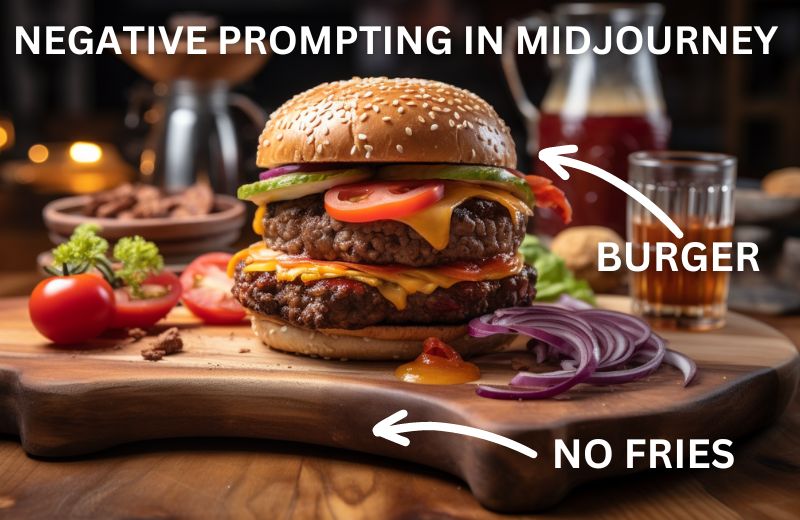
Midjourney Negative Prompt Explained
Negative prompting is a method that you can use to ensure certain elements in an image won't be generated. You can use it simply by attaching a parameter to the end of your prompts. This is known as the --no parameter, and is quite popular among users in Midjourney.
Basically, you can write an entire prompt and then specify what you don't want to be generated.
I'll give you a very basic example. Let's say that you want to generate an image of a person sitting at a dinner table. Chances are that in most of these images, the person will have their hands on the table. But Midjourney is not too good at generating hands (at least at the time of writing this article), so you want to make sure that they aren't included in the image.
So, instead of writing "/imagine person sitting at a dinner table", you write a prompt that goes "/imagine person sitting at a dinner table --no hands".
That's the most elementary explanation of the negative prompting method. I don't use this method too often, but sometimes it's really useful when I have a good prompt but want to omit a specific detail from the generated output.
Midjourney Negative Prompts Examples
An explanation of the negative prompting method is not enough when we're talking about a text-to-image model. To ensure that you understand what I've written in this article, I need to show you several examples of this method and how to use it effectively.
I will be using Midjourney version 5.2 for all the prompts in this article. At the time of writing this, version 5.2 is the latest Midjourney iteration. Here are some Midjourney negative prompting examples.
/imagine photorealistic image shot with Canon EOS R5 of a cheeseburger on a wooden plate --no fries --ar 16:9 --v 5.2

Let's start with this very simple example. I've created countless photorealistic images of burgers in Midjourney. In most cases, the burger is usually accompanied by French fries. This is something I don't want to see in this particular image, which is why I chose to use the negative prompting method.
Simply by writing --no fries at the end of my prompt, I instructed the AI model to avoid generating them. I can even go one step further and include vegetables in the negative prompt to ensure I don't see tomatoes, onions, or any other veggie in the next iteration of the image.
/imagine photorealistic image of an urban area at night where a lot of people visit shops, eat at restaurants, and go clubbing --no cars --ar 16:9 --v 5.2
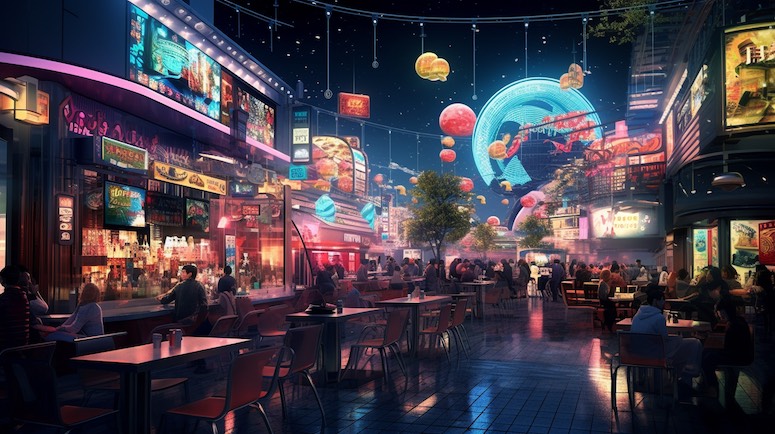
When I write that I want to see an urban city area at night in a prompt, there's an extremely high chance that Midjourney will generate vehicles in the image. I didn't want that to happen in this particular case, so I made a negative prompt to solve the problem.
/imagine the streets of a metropolis with tall, modern buildings --no cars people --ar 16:9 --v 5.2
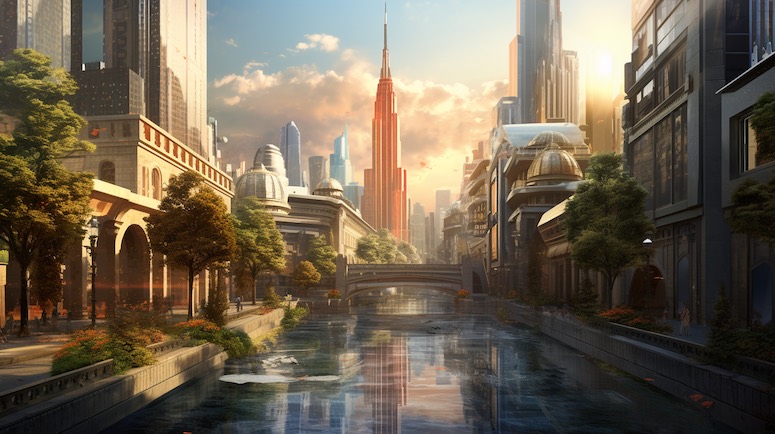
This is an incredibly similar prompt, and somewhat similar to the previous one because they both represent urban areas. What I wanted to show you with this example is that you can include multiple details in a negative prompt.
In this case, I instructed the AI model not to generate cars nor people in the images. You can feel free to add as many keywords as you want following the --no parameter.
/imagine neopunk art style image showing a battle in a futuristic city between the police and a group of vigilantes --no weapons --ar 16:9 --v 5.2

If there's anything I learned from action movies it's that when two large groups of people are fighting each other, someone is bound to use a weapon. I didn't want any weapons to appear in this image, which is why the negative prompt parameter came in handy here.
/imagine pictorial mark logo for a dating app where people can easily find soulmates, exchange messages, and set up dates --no heart --v 5.2
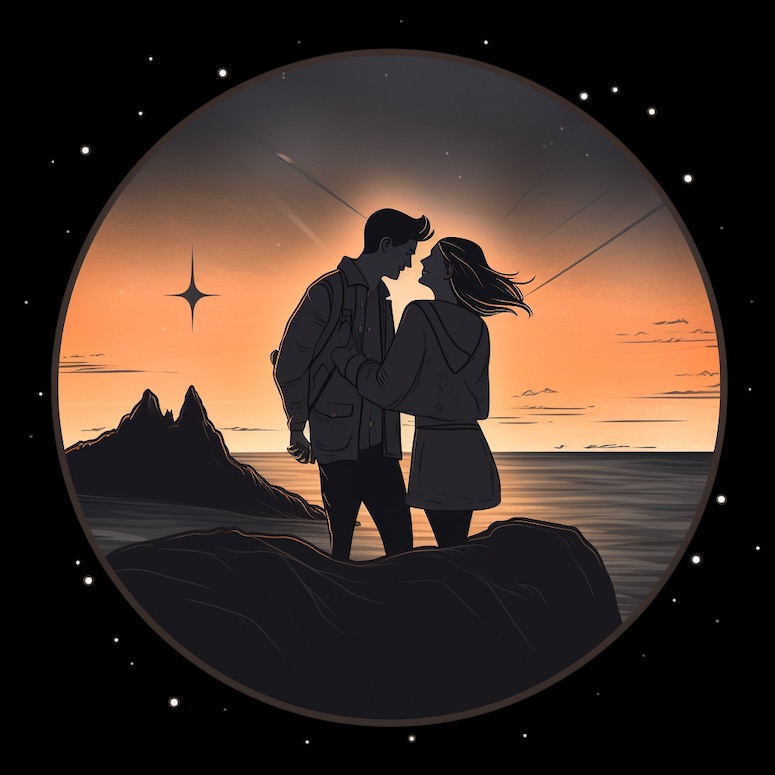
If you want to create a logo for a dating app in Midjourney, you'll be surprised just how often this text-to-image model creates one that includes a heart. While I think that a drawing of a heart is definitely good for a dating app, I wanted to show you that it doesn't have to be included in a logo.
/imagine photorealistic image taken with Sony A6400, 21mm lens, natural landscape with lush greenery --no trees --ar 16:9 --v 5.2
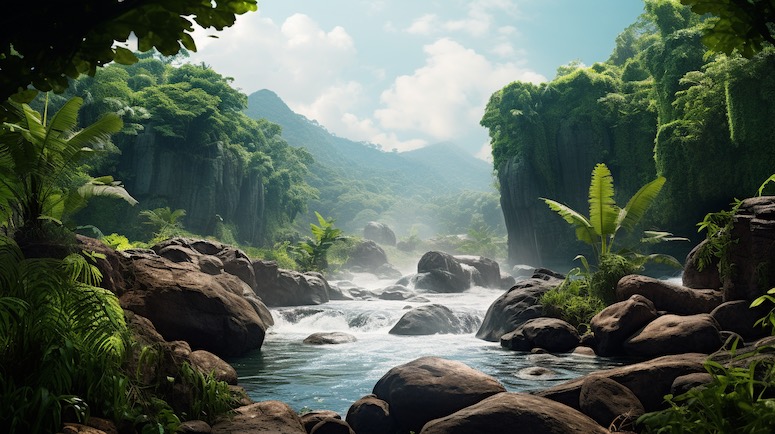
I absolutely love creating photorealistic images in Midjourney. The best way to do it is to mention a popular camera model and include a specific focal length. These instructions will help the AI model understand what the image should look like.
/imagine 3D animated forest during spring when everything comes to life, cute, charming, Unreal Engine 5 --no animals insects --ar 16:9 --v 5.2
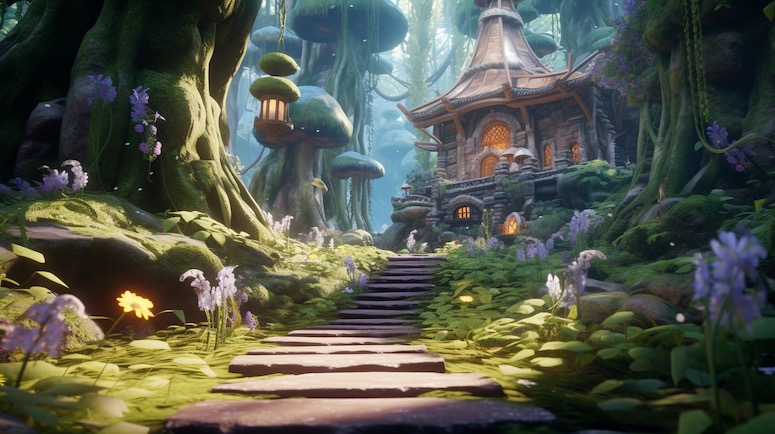
This is the final example I'll show you for negative prompting. It's an animated scene of a forest and I didn't want to include random animals roaming around or butterflies flying in the sky.
Final Thoughts
That's about everything there is to know about the negative prompting method in Midjourney. You can see for yourself that it's an incredibly easy way to ensure certain details don't show up in your images.
It can be difficult to predict what type of details Midjourney will generate for each prompt. That's why it's recommended to use negative prompting only after you see details that you don't like.
In most cases, it will take you several tries before you write a quality prompt that produces the perfect image. That's why you should start small. Try writing a basic prompt in the beginning and then inspect the generated images to see which details you might want to add and which ones you want to remove. That's how you take an initial idea and transform it into a beautiful image.